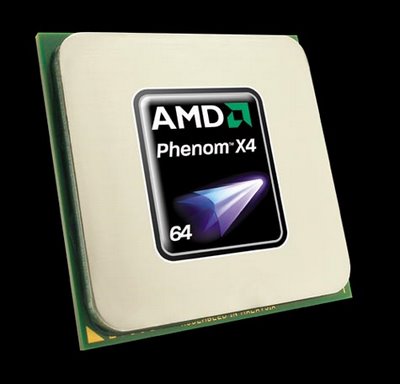
Back in 2005 the workstation sector was all about AMDand its Opteron CPU. At that time the Opteron wiped the floor with anything Intel could throw at it and all the major Tier One workstation vendors, with the exception of Dell, took on the powerful chip to head up their workstation lines. But then Intel introduced the Core 2 Duo and things changed overnight. AMD lost its leadership position and Intel began outgunning AMD across the board. Since then AMD-based workstations have only been seen in niche sectors, targeting price/performance sweet spots or users of specialist CAE applications.
This month, however, AMD introduced a brand new quad core chip called the Phenom II X4, which it hopes will take the fight back to Intel. Available in speeds from 2.5GHz to 3.0GHz, the Phenom II X4 is built around AMD’s Direct Connect architecture, which means it receives data directly from the system RAM, rather than going via a slower Front Side Bus. This is a technology that AMD originally pioneered with its Opteron processor and one that Intel has only just ‘borrowed’ for its Core i7.
To put this new technology to the test we managed to get hold of an extremely rare 2.8GHz Phenom II X4 925 courtesy of specialist workstation builder XWorks. Nestled alongside an AMD ATI FirePro V3750, 4GB RAM, a 250GB hard drive and Windows XP SP3, the compact workstation is designed to offer excellent price/performance and at £745, the price is certainly competitive.
While the cost of an AMD Phenom II X4 925 chip is comparative to a 2.67GHz Intel Core i7 920, the big saving comes through the ASUS M3A78-CM mainboard, which with a retail cost of around £50, is around a quarter of the price of most Core i7 motherboards, which are particularly expensive at this moment in time.
But what about the performance? In terms of CPU-specific tests we benchmarked with 3ds Max Design 2009, an application which makes full use of multiple cores when rendering scenes. The performance was almost 50% slower than the overclocked 3.2GHz Core i7-based Scan 3XS workstation we tested last month, but that doesn’t tell the whole story as far as CPU performance is concerned. 3ds Max is one of the few 3D applications to offer finely tuned support for HyperThreading, a unique feature of the Core i7 which boosts multithreaded performance by simulating additional cores (click here).
The most interesting results, for CAD users at least, came when testing graphics under SolidWorks and Inventor. To begin with we didn’t quite believe the SolidWorks 2009 score of 17 Frames Per Second (FPS), simply because it’s the fastest we’ve yet to see in any machine, but repeated tests verified our initial findings. The Inventor score of 3.3 FPS was more in line with what we’d expect, slower than the Core i7, but impressive all the same.
From our tests it’s hard to pass a definitive judgment on the Phenom II X4, simply because it doesn’t support HyperThreading, which gives Intel’s Core i7 an advantage in our 3ds Max benchmark that it wouldn’t have in other applications. However, for CAD applications our 3D graphics tests, which are very much linked directly to CPU performance, indicate that it’s certainly in the same ball park as the Intel Core i7.
While AMD looks to have an interesting technology on its hands, particularly when compared to Intel’s Core i7 in terms of price/performance, one mustn’t forget Intel’s Core 2 Duo, which is now being sold at extremely competitive prices, even at high GHz. And if dual core is not enough because you have specific multithreaded rendering or analysis requirements, then Intel’s Core 2 Quad has also come down in price since the introduction of Core i7.
The long and short of it all is that AMD has delivered a chip, which while not setting the workstation sector on fire, certainly warrants closer attention. While it is unlikely that Tier One vendors will back the Phenom II X4 wholeheartedly, the chip is likely to be picked up by agile system builders like XWorks meaning at long last there’s an AMD chip that should be considered alongside Intel when choosing a workstation, particularly when the purse strings are tight.






